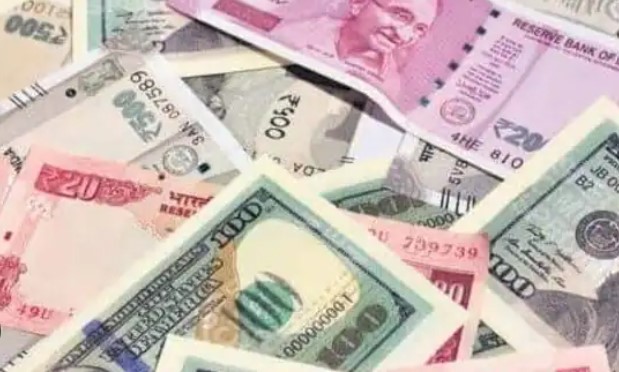
Rupee stages a recovery, strengthening by 17 paise to reach 83.17 against the US dollar
Rupee Rebound, Equity Market Surges, and Global Economic Factors
After experiencing a decline over the past two consecutive days, the rupee showcased a rebound, closing 17 paise higher at 83.17 (provisional) against the US dollar on Thursday. This upward movement was attributed to the weakness of the American currency in the global market and a surge in the domestic equity markets. Additionally, the inflow of foreign funds and a downward trajectory in crude oil prices provided further support to the Indian currency, as observed by forex traders. The rupee opened at 83.33 in the interbank foreign exchange, fluctuating within the range of 83.16 to 83.34 against the greenback before settling at 83.17 (provisional), marking a gain of 17 paise compared to its previous close.
After experiencing a 15 paise decline against the dollar on Wednesday, settling at 83.34, following a 3 paise loss in the previous session, the domestic currency displayed appreciation. Anuj Choudhary, a Research Analyst at Sharekhan by BNP Paribas, attributed this positive movement to the weakness of the US dollar and a surge in the domestic markets. He anticipates that the rupee will likely trade with a slight positive bias, driven by fresh foreign inflows and the continued decline of the US dollar. Additionally, Choudhary suggests that traders may seek guidance from the weekly unemployment claims data from the US. The expected trading range for the USD-INR spot price is projected to be between Rs 82.90 and Rs 83.50.

Continuing its positive momentum, the Indian rupee rebounded after two consecutive days of decline to settle 17 paise higher at 83.17 against the US dollar. This rebound was observed amid a weakened US dollar in the global market and a rally in domestic equity markets.
Foreign fund inflows, coupled with a downward trend in crude oil prices, provided further support to the Indian currency, as reported by forex traders. At the interbank foreign exchange, the rupee opened at 83.33 and traded within a range of 83.16 to 83.34 against the greenback. Ultimately, the local unit closed at 83.17 (provisional), marking a gain of 17 paise compared to its previous close.
On the preceding day, the rupee had settled 15 paise lower at 83.34 against the dollar, following a 3 paise loss. Analysts anticipate the rupee to maintain a positive bias, driven by fresh foreign inflows and the ongoing decline of the US dollar. Traders are expected to monitor the weekly unemployment claims data from the US, with the USD-INR spot price projected to trade within a range of Rs 82.90 to Rs 83.50, according to Anuj Choudhary, a Research Analyst at Sharekhan by BNP Paribas.
The US dollar saw a decline amid growing expectations of rate cuts by the US Federal Reserve. The dollar index, measuring the strength of the greenback against a basket of six currencies, recorded a 0.28% decrease, trading at 100.37 on Thursday.
Simultaneously, the global oil price benchmark, Brent crude, experienced a 0.64% decrease, reaching USD 79.14 per barrel.


